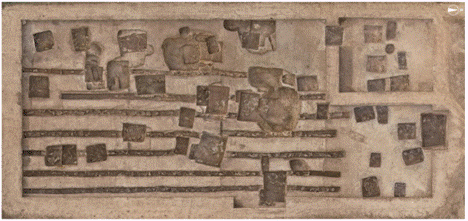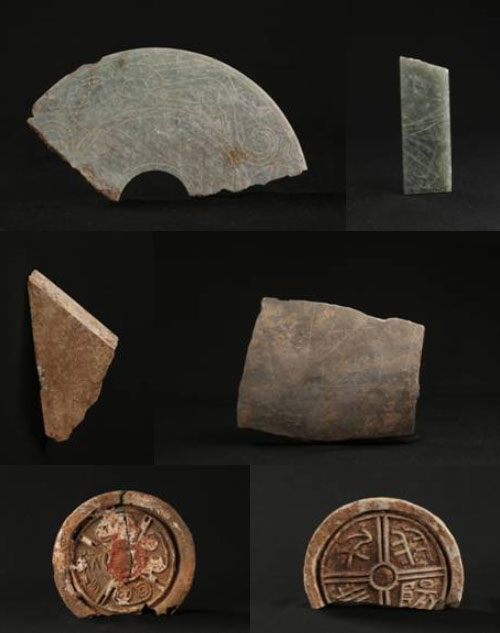The preliminary selection of “China’s Top 10 Archaeological Discoveries in 2020” has been launched recently, and the archaeological project “Ancient Worship Site of Qin and Han Dynasties in Xiazhan Village of Chencang District in Baoji City” is among them. The excavation was jointly conducted by the National Museum of China, archaeological institutions of Shaanxi Province and Baoji City, and a local museum in the city.

Panorama of the excavation area

Ortho-image
The Xiazhan Worship Site is in Shaanxi’s Baoji City, the upland on the south bank of the Weihe River at the north foot of Qinling Mountains. Since 2015, the NMC has worked with Shaanxi Academy of Archaeology and Baoji Municipal Administration of Cultural Heritage to conduct archaeological survey, excavation and study on the "Five Altars of Qin and Han in the vicinity of Yong (today’s Baoji)”. So far, four worship sites including Xuechi, Wushan and Xiazhan have been discovered. From 2016 to 2018, archaeologists conducted excavation in Wushan Worship Site, archaeologically proving that Xuechi and Wushan worship sites are among the “Five Altars”. In 2020, upon approval of National Cultural Heritage Administration, the NMC, archaeological institutions of Shaanxi Province and Baoji City and Chencang District Museum of Baoji jointly conducted excavation in the Xiazhan Site.
Rulers in Qin and Han dynasties built altars at Fu, Mi, Wuyang Shang, Xia and Beito sacrifice to the deities and declare their legitimacy of ruling all the land. Archaeologists have thus far discovered more than 60 building sites and sacrificial pits in the Xiazhan Site, which are arranged in good regularity. They are quite similar to those in Xuechi and Wushan sites, indicating that they were all used for the same purpose. According to Shiji, there was only one altar on the south bank of the Weihe River, as it was recorded that “Duke Xuan of Qin built an altar at Mi in the fourth year of his reign at Weinan to sacrifice to the Green Emperor (Cangdi)”. Obviously, the “Weinan” here means “the south bank of the Weihe River” instead of Shaanxi’s Weinan City today. Pottery inscription “密 (Mi)” of Han Dynasty was unearthed there, which was also carved on earthenware, just like the inscriptions“上畤 (Shang Zhi)” and “下畤 (Xia Zhi)” unearthed in Xuechi Site, and they should be used for the same purpose. To sum up, the Xiazhan Worship Site should be the Mi Altar built by Duke Xuan of Qin to sacrifice to the Green Emperor, which was in use until late Western Han Dynasty when it was finally abolished during Wang Mang’s reforms.

Jade ware, pottery inscription “密” and tiles unearthed from the site